Travel takes you to many places that are beautiful. But at times you find yourself in places where the words “beautiful”, “stunning”, “picturesque” or “gorgeous” just don’t seem to do it justice. Pudacuo National Park or Potatso National Park near Shangri-La (Zhongdian), China is one such place. One look at it and I was reminded of words Jane Austin’s protagonist, Elizabeth Bennet had used to describe her first sight of Darcy’s estate of Pemberley – “She had never seen a place for which nature had done more, or where natural beauty had been so little counteracted by an awkward taste”.
Pudacuo National Park or the Potatso National Park (as it’s also called) is located in the centre of “Three Parallel Rivers” – a world natural heritage site northwest of Yunnan Province and is the first national park in mainland China. In the Tibetan language, Potatso means “reaching the opposite side of the lake by boat under the help of deity“. This national park has two huge lakes – the Bitahai and Shuduhu Lakes, coniferous forests, marshes, valleys, alpine meadows and small stupas.
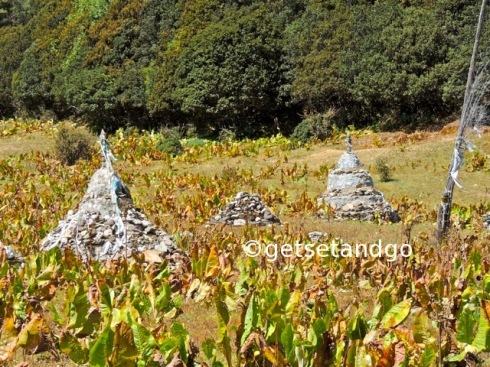
Stupas and a lot local plant that was growing abundantly all around, Pudacuo National PArk, Shangri-La
We were in Shangri-La and searching for things to do when our homestay recommended a day trip here. Though there were quite a few mixed reviews online (on tripadvisor), we had time on hand and decided to go ahead and see for ourselves what this place was all about. And I am glad we did. We booked a car and drove through a beautiful Tibetan countryside with traditional Tibetan houses, fields, temples for approx. 45 minutes to reach. The entrance to the park had a huge parking lot, and was filled with so many cars, that for an instant I thought that all I’ll see will be a crowd of people and endless queues. But the park is so huge, that people had spread out and we didn’t encounter them.
The park is massive with a designated route and you travel between the stops by an eco–bus. The bus first takes you to the Shudu Lake then the Militang Grasslands and finally the Bita Hai Lake. All areas open to tourists are connected by walkable woodplanks and you have to stick to these paths. Along the path there are numerous resting areas, one small shop selling snacks and numerous signages to guide you.
For our trip, we first bought our tickets then boarded the eco-bus for our first stop –the Shudu Lake. During the drive a guide gave an introduction to the park and its history but it was all in mandarin and in a different dialect, so with our novice mandarin skills, we didn’t understand much of what he explained. The only thing we all understood was that this landscape is very similar to that of Yellowstone National Park in the US. Apart from that we enjoyed looking out of the window and admired the stunning views and scenery outside.
Our first stop was the Shuduhu Lake. ‘Shu’ means cheese in Tibetan and ‘Du’ means stone. The legend of this place says, that in ancient times, an eminent monk traveling from place to place arrived here and the local herdsmen supported and treated him with cheese. The eminent monk was glad to see that the cheese of the pastureland of Shudukang is as strong as stone, so he prayed ‘wish the cheese here is as strong as stone forever’. From then on, this place came to be known as the Shudukang.
The walking path along this lake is around 3km and there are options to walk or to take a boat. We decided to walk along and explore the beautiful sights, try to capture some on camera and generally soak in the fresh air and beauty all around us. I don’t want to describe these views and recommend that you see and experience for yourself the mesmerizing, romantic and the calm that we often forget staying in the city and being caught up in our day-to-day hectic work lives…
Anyway, going back to the park, it also has these unique trees called the beard trees. Here “Treemoss” is a light greyish green lichen that hangs from the branches of select trees, thereby giving an impression that the trees have beards. 🙂
There are also many dead trees here that add their own twist to the landscape. There are two specific variety of trees that grow very close to the lake. The shallow soil is constantly eroded by the lake and these trees eventually fall and die. But their huge dead roots create unique designs against the backdrops of the lake and the forests.
I also loved the small signages placed around here that provide some interesting facts about the flora and fauna of the area and it helped me build up my bits of general knowledge too.
We then took the bus to our second stop – the Militang grasslands. The name means “long and slim eye like meadow” after the narrow eyes of Buddha. Though we couldn’t physically step onto the grasslands, we saw them and the herds of horses, yaks and cows gazing all around and got a sense of the actual lives of these herdsmen especially during winters.
Our final stop for this trip was the – Bitahai Lake, the highest lake in Yunnan. In ancient Tibetan language, Bita means “the area heavily covered with trees” and there are actually century-old pines and cypresses all around this lake. There is also a small island here. It is said that in this lake there is an islet covered by cedars and azaleas. In spring, when the withered azalea flowers fall into the lake and are eaten by fish, the fish become unconscious and give the impression of being in an “almost drunk” state and float on the surface with their abdomen facing the sky. Since we went in Autumn, we didn’t see this sight.
This lake is also beautiful but after the Shudu Lake can seem repetitive. So we decided to see this via a boat ride. The boat’s route is parallel to the walking path and hence you get a different perspective of the landscape. However do note that the boat does not drop you till the bus stop. Its stop is about a km before the stop on the walkway and you have to walk till the bus stop from here. But don’t worry the gorgeous landscape keeps you company all along.
Overall this is a must visit on your trip to Shangri-La especially for the Asian city dwellers. There are a number of negative reviews online about not being able to explore the park on your own. But I feel that in Asia if such parks have to be maintained, then these rules are necessary. Else people will have no regard for the precarious balance of the local ecosystems and will be trampling their way all around. There are also various negative comments on the steep fee and how such views are free in many countries. I agree with this to a certain extent, but I have to commend the local authorities for the amazing maintenance and cleanliness of the park. And if the price for maintaining the park and the ecosystem is a steep fee, then I feel its acceptable.
Tips for the trip –
- For a trip here, the easiest way is by booking a car for the trip.
- Plan for spending at least half a day here if you plan to not walk at all and nearly a day if you are planning to walk all the way. In terms of fitness I would rate it as easy as the walk is not at an incline but does have quite a few stairs.
- The entrance fee of the park is RMB 250. There is a separate ticket for the boat ride of RMB 50 / per ride.
- We didn’t buy any oxygen tanks nor felt a use for it. So don’t waste money on it.
- Carry a raincoat or an umbrella as well as a hat and sunscreen as the weather can change suddenly. Also do carry a fleece for the cold, as near the lakes its quite cold.
- Wear comfortable walking shoes as there is a lot of walk.
- There are a few shops with chinese-style snacks but nothing else. There are no restaurants for lunch or a meal. So do carry your own food.

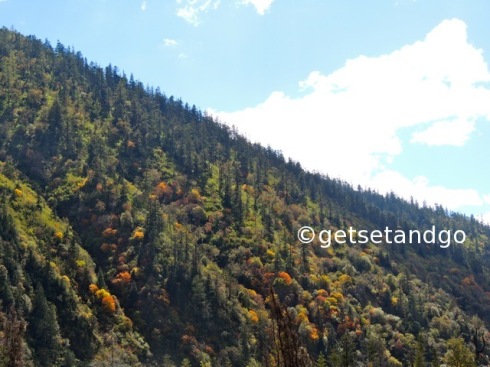
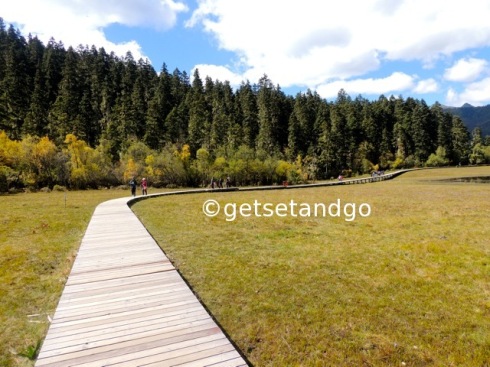

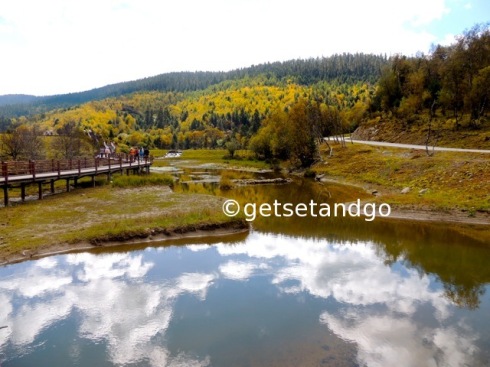


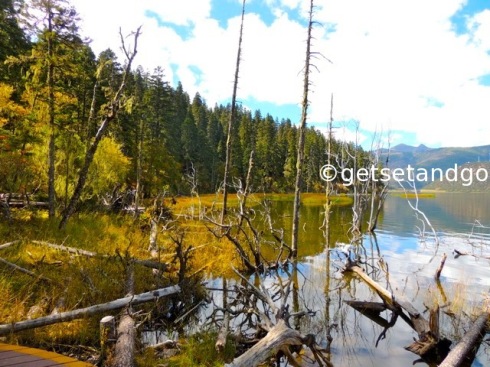

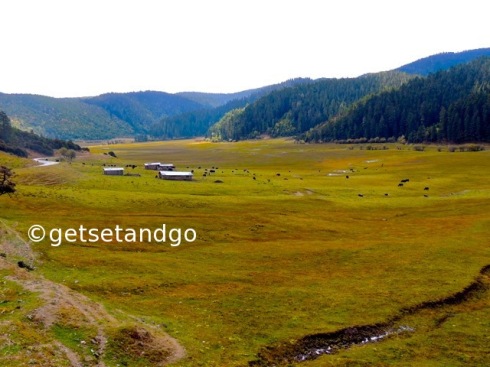
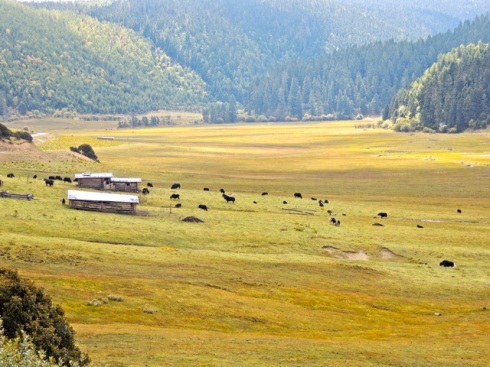

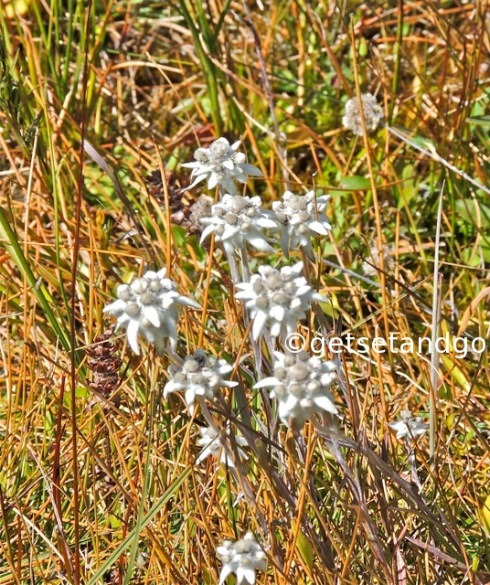
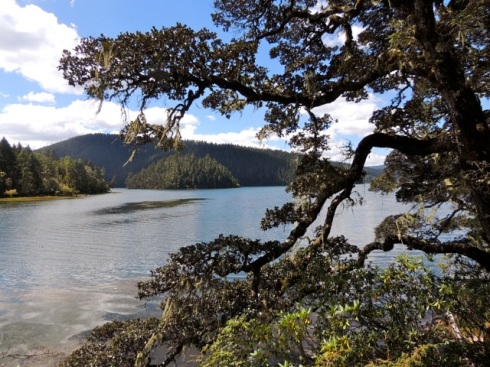
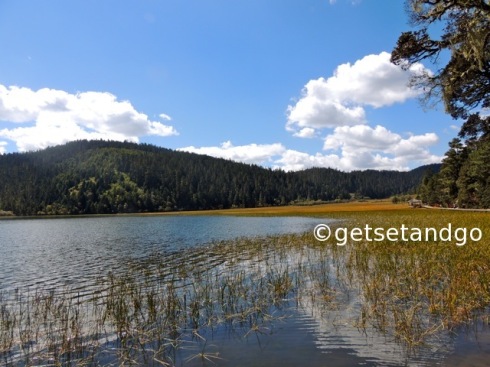















wow, stunning landscapes! Why do they rent oxigen tanks?
LikeLike
Thanks 🙂 since it’s at a considerable height of around 4,000m some people may feel dizzy an unwell due to lack of oxygen…
LikeLike
Gorgeous landscape…beautiful photos you have there 🙂
LikeLike
Thanks 🙂
LikeLiked by 1 person
Beautiful photographs! Will be going to China next month, and these pictures are making me excited about the trip. 🙂 Also, thanks for visiting my blog!
LikeLike
Thanks and I hope you have a great trip 🙂
LikeLike
Great post – sounds/looks like a wonderful place to visit!
LikeLike
Thanks and it is 🙂
LikeLike
Wow, Great blog with beautiful pictures. China seems like a really amazing location. Potatso National Park looks spectacular. It was a very informative post. I learned a few new things about China from your post, thank you for sharing this experience.
LikeLike
Thanks Sanchit for visiting my blog and the kind words 🙂
LikeLike
Many thanks for your useful information & tips. It helps me a lot to plan my trip to Shangri la end of this month. I heard now there are some restaurant here but not sure :)) We will have 3 nights in Shangri la so can you suggest for some places? Im planning for Songzanlin Monastery, Pudacuo National Park, explore the Old Town.
LikeLike
There are numerous restaurants, bars, pubs in Shangri-La and many options in terms of cuisines etc…
LikeLike
Your blog helps me to recollect the sites visited during my trip to Potatso national park. It helps me to really appreciate the record and time spent. Thank you once again.
LikeLike
Thanks for the kind words 🙂
LikeLike